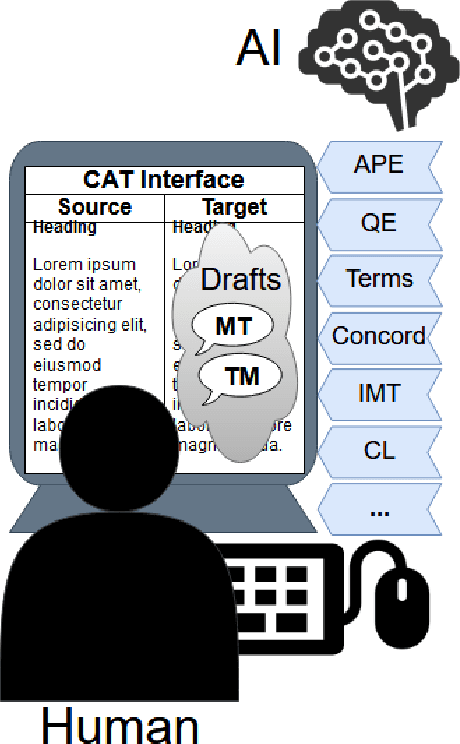Integrating Artificial and Human Intelligence for Efficient Translation
Paper and Code
Mar 07, 2019
Current advances in machine translation increase the need for translators to switch from traditional translation to post-editing of machine-translated text, a process that saves time and improves quality. Human and artificial intelligence need to be integrated in an efficient way to leverage the advantages of both for the translation task. This paper outlines approaches at this boundary of AI and HCI and discusses open research questions to further advance the field.
 Add to Chrome
Add to Chrome Add to Firefox
Add to Firefox Add to Edge
Add to Edge